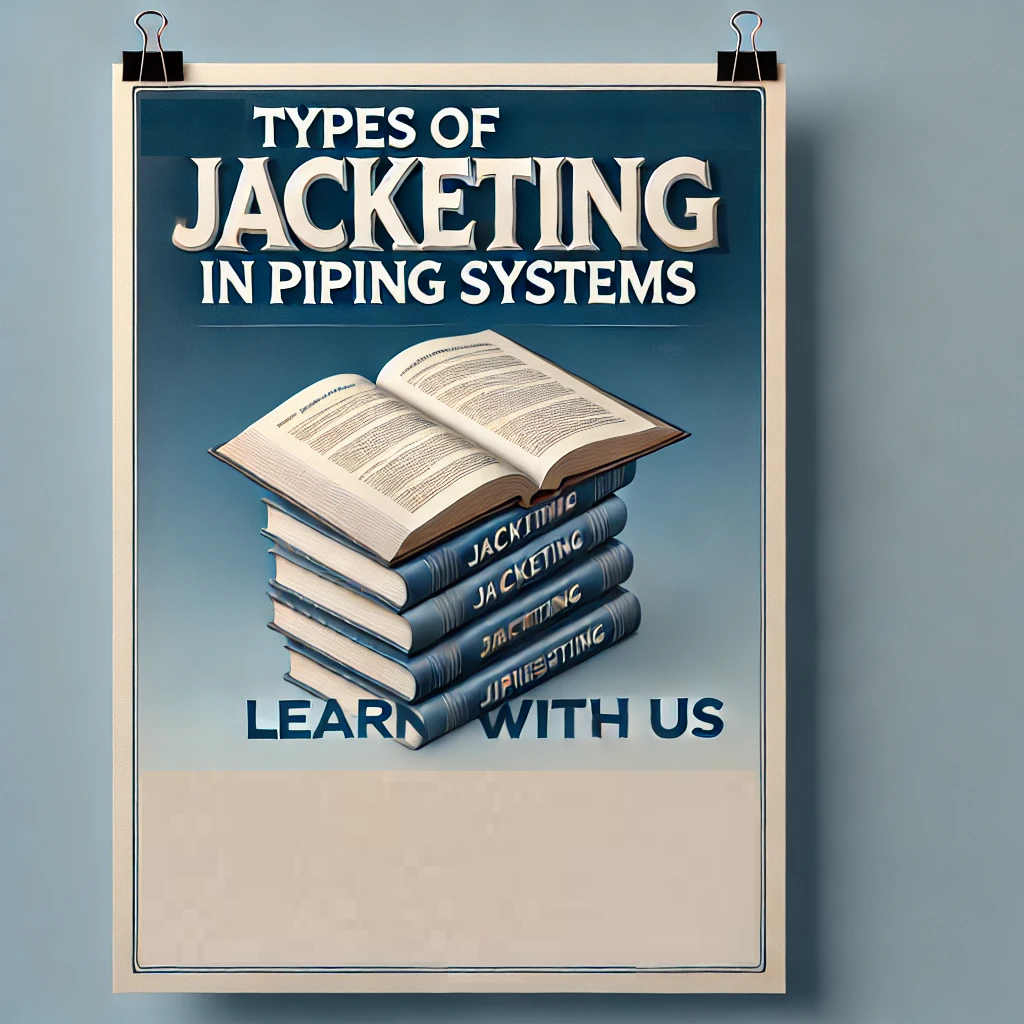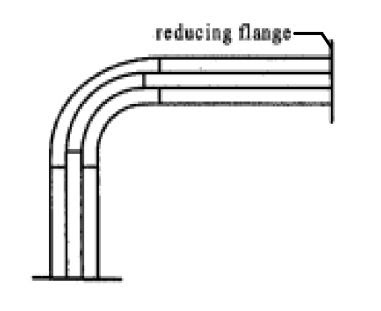TYPES OF JACKETING IN PIPING SYSTEMS
In industrial piping, jacketing is the practice of applying an outer pipe (jacket) around a core pipe to control temperature, protect the core pipe from environmental exposure, or ensure the safe transfer of materials. The choice of jacketing type depends on system requirements such as temperature control, material protection, and cost considerations. Each type of jacketing has distinct advantages, disadvantages, and typical applications. Here’s a breakdown of the main jacketing types:
1. Jacketing Only on Straight Pipes (Leaving Bends and Flanges Exposed)
Description:
In this method, only the straight sections of the pipe are jacketed, leaving bends, elbows, and flanges exposed. This can save materials and reduce complexity since only certain sections are covered.
Advantages:
Cost-Effective: Because less material is used, this approach can be more affordable than other types of jacketing.
Ease of Maintenance: With flanges and bends exposed, these sections are more accessible, making maintenance and inspection easier.
Simplicity of Installation: Straight pipes are easier to jacket without the need for special fittings or modified flanges, simplifying the installation.
Disadvantages:
Reduced Thermal Consistency: Since bends and flanges are exposed, there may be heat loss at these points, making it less effective in applications requiring uniform temperature.
Limited Protection: Exposed sections are more vulnerable to environmental factors, corrosion, or damage.
Applications:
Non-Critical Temperature Control: Ideal for applications where exact temperature control is not critical, such as heating oil in straight sections of piping.
Low-Pressure Lines: Suitable for low-pressure fluid lines where protection around bends is not essential.
2. Jacketing on Straight Pipes and Elbows with Core-Sized Flanges
Description:
This approach involves jacketing straight sections and elbows of the piping, while flanges remain at the same diameter as the core pipe. This balances insulation coverage with manageable flange sizes.
Advantages:
Improved Thermal Coverage: By including elbows, this method provides more uniform temperature control along both straight and bent sections.
Standardized Flange Size: Using core-sized flanges means that the jacket does not require larger flanges, which can simplify installation and reduce the need for specialty fittings.
Enhanced Durability: Protection extends to elbows, which are often more susceptible to wear.
Disadvantages:
Moderate Cost: Although more costly than jacketing straight pipes only, it’s less expensive than fully jacketed systems with jacket-sized flanges.
Potential Weak Points: Flanges still remain unjacketed, leading to potential weak points for thermal consistency and exposure.
Applications:
Process Piping in Chemical Plants: Where medium-level thermal control is needed, such as preventing fluid viscosity changes in lines with bends.
Pharmaceutical and Food Processing: Suitable for industries requiring cleanliness and temperature stability along most of the piping line but where extreme uniformity is not critical.
3. Full Jacketing on Straight Pipes and Elbows with Jacket-Sized Flanges (Using Reducing Flanges)
Description:
This is a comprehensive jacketing approach where the straight sections, elbows, and flanges are all jacketed, with the flange size matching that of the jacketed pipe. Reducing flanges are often used to fit the larger outer jacket diameter.
Advantages:
Maximum Thermal Consistency: With jacketing extending over the entire pipe system, including flanges, there is minimal risk of heat loss.
Enhanced Protection: Fully jacketed pipes offer comprehensive environmental protection, making them suitable for harsh or corrosive environments.
Better Control of Temperature-Sensitive Fluids: Ideal for processes that require precise thermal management.
Disadvantages:
High Cost: This method requires more materials and custom fittings, making it the most expensive jacketing option.
Increased Complexity in Installation and Maintenance: Jacketed flanges and elbows require specific fittings and welding, which can be complex and may need specialized labor.
Applications:
High-Temperature and Critical Process Lines: Common in petrochemical, pharmaceutical, and chemical industries where strict temperature control is essential.
Cryogenic and Steam Lines: Necessary for pipelines transporting cryogenic materials or steam, where temperature uniformity is crucial.
Corrosive Environments: Essential in environments where pipes are exposed to extreme weather or chemicals that could degrade unprotected sections.



